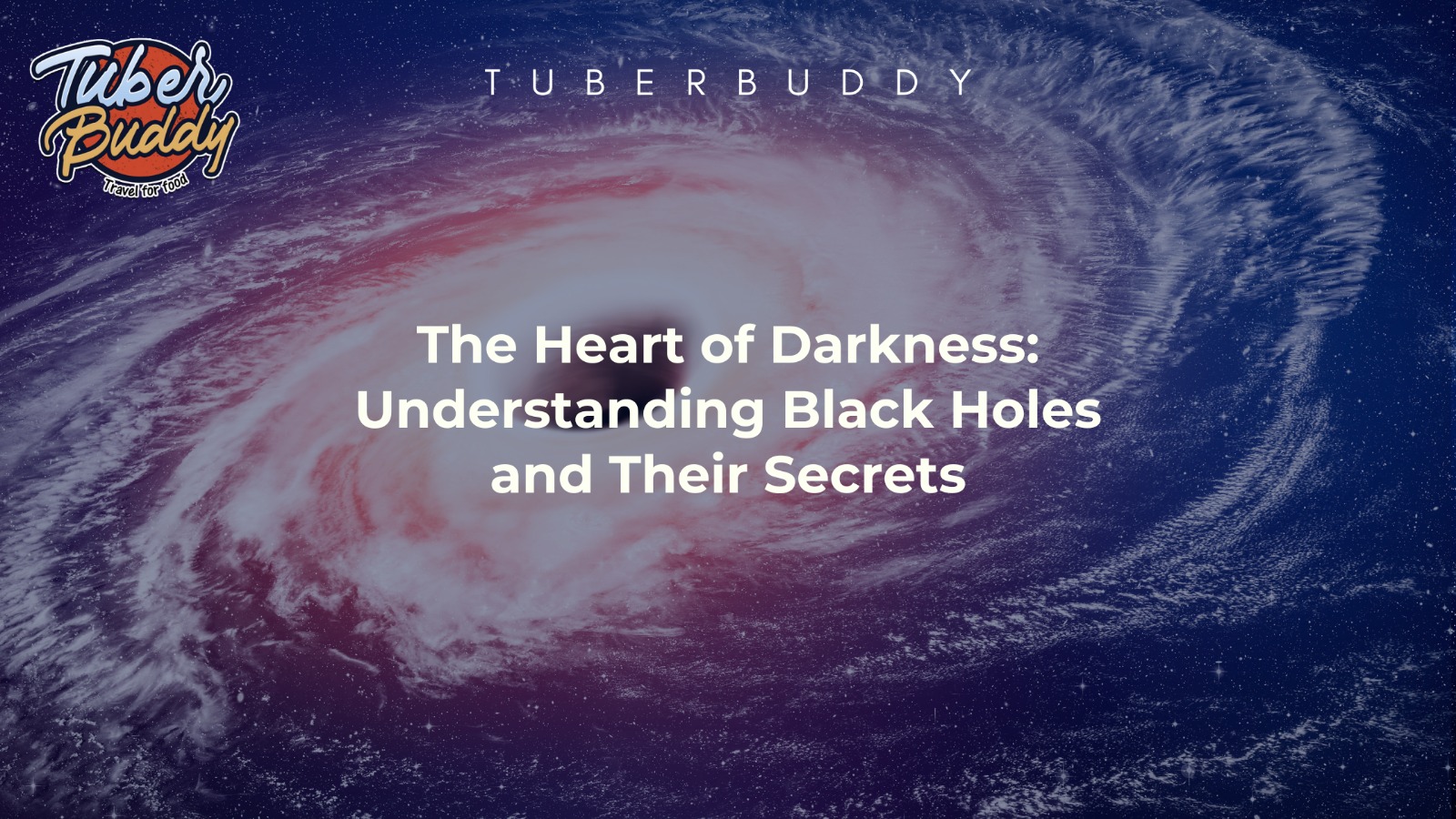The Heart of Darkness: Understanding Black Holes and Their Secrets

The cosmos is a vast expanse filled with wonders, but few phenomena are as enigmatic as black holes. These celestial entities, shrouded in mystery, challenge our understanding of physics and the universe. From their formation to their immense gravitational pull, black holes continue to captivate scientists and stargazers alike.
What Are Black Holes?
A black hole is a region in space where gravity is so strong that nothing, not even light, can escape its grasp. This intense gravitational pull is the result of a massive amount of matter compressed into a small space, often the remnants of a collapsed star. Black holes are invisible to the naked eye, earning them the nickname “hearts of darkness”.
Formation of Black Holes
Black holes form when a massive star exhausts its nuclear fuel and collapses under its own gravity. This collapse leads to the creation of a singularity—a point of infinite density surrounded by an event horizon, the boundary beyond which nothing can escape.
Black holes are generally classified into three types:
- Stellar Black Holes: Formed by the collapse of a single massive star.
- Supermassive Black Holes: Found at the center of galaxies, including our Milky Way. These are millions to billions of times the mass of our Sun.
- Intermediate and Primordial Black Holes: Hypothetical black holes thought to have formed in the early universe or during intermediate stellar processes.
What Lies Beyond the Event Horizon?
The event horizon is the defining boundary of a black hole. Once an object crosses this threshold, it is lost forever. What happens inside remains one of the greatest mysteries of science.
According to Einstein’s theory of general relativity, the singularity at the center of a black hole is a point where space-time curvature becomes infinite. However, quantum mechanics suggests a need for a more comprehensive explanation, sparking debates about what truly lies beyond the event horizon.
How Do We Detect Black Holes?
Since black holes do not emit light, detecting them is challenging. Scientists rely on indirect methods, such as observing the effects of their gravity on nearby stars and gas clouds. Key techniques include:
- Accretion Disks: When gas and dust spiral into a black hole, they form an accretion disk, which emits intense X-rays as it heats up.
- Gravitational Waves: The collision of two black holes creates ripples in space-time, detectable by instruments like LIGO.
- Star Behavior: Nearby stars may exhibit unusual movements due to the gravitational pull of an unseen black hole.
Black Holes and the Fabric of Space-Time
Black holes play a pivotal role in shaping the universe. Their immense gravity distorts space and time, creating phenomena such as time dilation. Close to a black hole, time appears to slow down relative to an observer farther away.
The concept of black holes also gives rise to fascinating theories, including wormholes—hypothetical passages through space-time that could enable interstellar travel.
The First Image of a Black Hole
In 2019, humanity achieved a groundbreaking feat by capturing the first-ever image of a black hole. The Event Horizon Telescope (EHT) team revealed a supermassive black hole at the center of the galaxy M87. This iconic image, showcasing a glowing ring of gas and dust around a dark core, confirmed many theoretical predictions about black holes.
Black Holes and Their Role in the Universe
While often portrayed as destructive forces, black holes also contribute to cosmic creation. They regulate star formation, influence galaxy evolution, and are thought to play a role in the recycling of cosmic materials.
Supermassive black holes, in particular, generate powerful jets of energy that can shape entire galaxies. These jets, observable as quasars, are some of the brightest phenomena in the universe.
Unanswered Questions and Future Research
Black holes remain a field of active research. Some of the biggest questions include:
- What happens to information that falls into a black hole? The “information paradox” challenges our understanding of quantum mechanics and general relativity.
- Are black holes connected to other dimensions? Some theories suggest that black holes may be portals to alternate universes.
- How do supermassive black holes form? Their origins remain unclear, with theories ranging from the collapse of massive gas clouds to the merging of smaller black holes.
Upcoming missions, such as the James Webb Space Telescope (JWST) and enhanced gravitational wave detectors, promise to shed more light on these cosmic enigmas.
The Philosophical Perspective
Black holes are not just scientific phenomena; they also evoke profound philosophical questions. They challenge our understanding of time, space, and existence, pushing the boundaries of human thought.
The study of black holes reminds us of the vastness of the universe and our place within it. As we uncover their secrets, we come closer to understanding the fundamental laws that govern reality.
Conclusion
Black holes stand as both the destroyers and creators of the cosmos, embodying the universe’s most extreme possibilities. Their study continues to inspire awe and curiosity, driving advancements in science and technology.
To explore more about the mysteries of the universe, check out TuberBuddy, your gateway to fascinating insights into space, science, and beyond!



